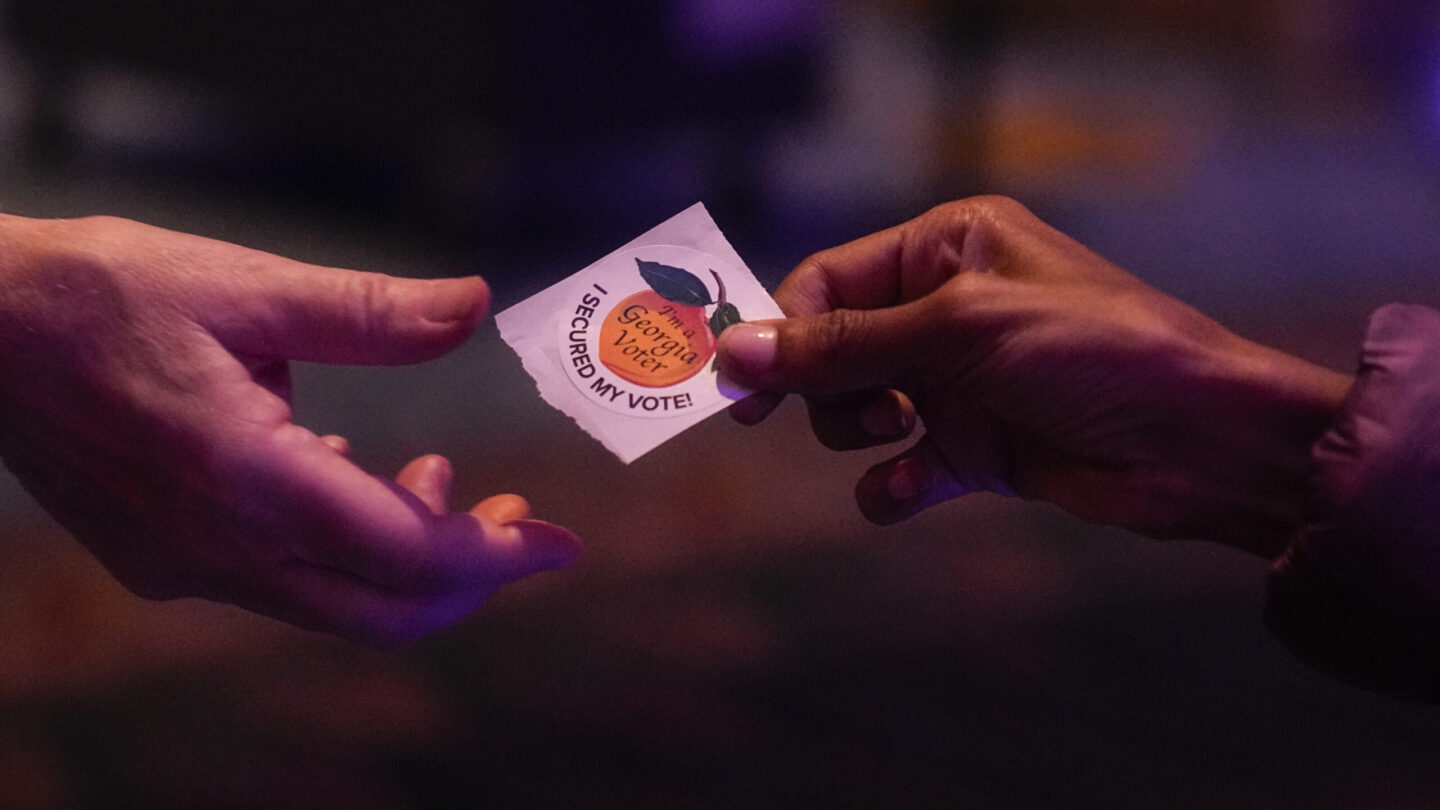Florida, Ohio, Virginia, Colorado: these were once perennial swing states. Now, a new pack of battlegrounds is emerging, including Georgia.
Two years ago, Democratic candidates for president and Senate won Georgia for the first time in years. Then this November, Republicans swept every statewide race except for the Senate, where Democratic Sen. Raphael Warnock prevailed in a runoff last week.
So does this mean Georgia has arrived as a purple state, or at least a competitive one?
“We are absolutely here to stay,” says Rebecca DeHart, executive director of the Democratic Party of Georgia. “How many more cycles do we have to win to prove it?”
On the heels of Joe Biden’s 2020 victory in Georgia by about 12,000 votes, the Democratic party is working to make Georgia an early primary state in 2024. Atlanta is also a finalist to host the next Democratic National Convention. DeHart says Warnock’s runoff win further solidifies Georgia’s place among the country’s premier battleground states.
“Georgia Democrats have always said our state will play a critical role in the national political landscape for years to come, and our state has been prioritized as such,” DeHart says.
Though Andra Gillespie, a professor of political science at Emory University, says pinpointing Georgia’s political hue is still complicated. She thinks Georgia’s electorate is not quite purple – maybe pink or lavender.
Gillespie says Georgia’s growth and diversity are shifting Georgia’s politics, but notes, “demographics are dynamic. This question of, ‘is Georgia pink or purple?’ – it’s going to take most of this decade to settle that question.”
Republicans still dominate the state government in Georgia. And in the U.S. Senate runoff, Republican football legend Herschel Walker lost by less than 3 points, despite his flaws as a candidate, including allegations of domestic abuse, a propensity for making false claims and his loose grasp of policy.
“We need to be cautious about looking at behavior in this runoff election and trying to extrapolate other things from it, in part because Herschel Walker was such a unique candidate,” Gillespie says.
Warnock’s campaign is credited with exploiting that dynamic by courting independent and moderate Republican voters with a message about bipartisanship, competence and character.
Two years ago, Democrats eked out wins in another unique environment. Back then, Donald Trump was a prominent factor, repelling many swing voters with false claims about election fraud.
So does that mean recent Democratic victories were exceptions, only possible in certain climates, or signs of a more lasting shift?
“One of my friends used to say, ‘If ifs and buts were figs or nuts, we’d all have a merry Christmas,” says Republican strategist Cody Hall, standing near the towering Christmas tree in the state capitol’s rotunda. “It doesn’t matter really if it’s a specific circumstance or not, they’ve been winning.”
Nearby is the office of Republican Gov. Brian Kemp. Hall was a top staffer on Kemp’s campaign. This year, Kemp trounced his Democratic opponent, Stacey Abrams by an even wider margin than their first matchup in 2018. Meanwhile, in a cycle otherwise good for Georgia Republicans, Walker floundered.
“We have to get out of the mindset that it is still 2010, 2014 when you could slap an R next to a candidate’s name and win by 8, 9,10 points,” Hall says. “If you nominate the wrong candidates, if you don’t have the right message and you don’t raise the money, you will lose.”
Years of organizing irregular and nonvoters helped catalyze that shift. Those efforts accelerated with Abrams’ 2018 bid for governor, who was the first major candidate in Georgia to center that outreach in a statewide campaign.
Helen Butler is executive director of the nonpartisan Georgia Coalition for the People’s Agenda, which has been working to register and engage voters since the nineties.
“Years and years of work, yes definitely so,” Butler says, gesturing toward the memorabilia plastered all over her office walls.
Butler says she doesn’t gauge Georgia’s politics in shades of blue, red and purple. Instead, she looks at the roughly 1.6 million new registered voters since 2018, many of them voters of color.
“I know that turnout is much better, and that’s what we aim for,” Butler says. “And I should say the participation rates are excellent.”
That participation has made Georgia more competitive. Even so, the November turnout rate fell from the 2018 midterms.
“I know there are a lot of people of color who we registered to vote who didn’t show up to the polls,” Butler says. “So my interest is getting those people to make that next step.”
Whatever you call Georgia – purple, battleground, swing state – it will likely be at the forefront of politics in 2024 and beyond.

9(MDAxODM0MDY4MDEyMTY4NDA3MzI3YjkzMw004))








